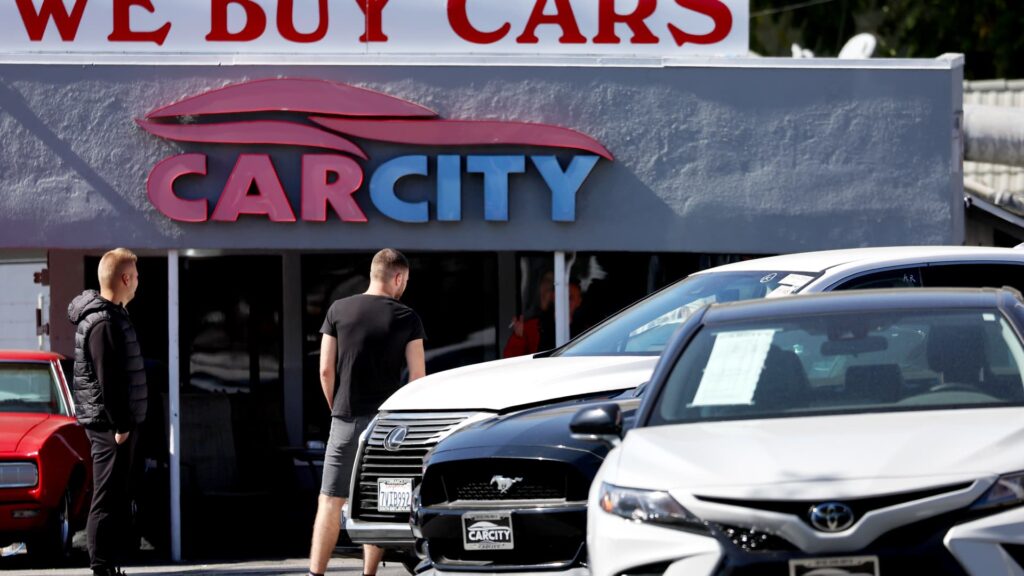Customers browse in a used car lot on February 15, 2023 in Glendale, California.
Mario Tama | Getty Images
All new vehicles become used cars and trucks once they’re sold.
It’s an obvious statement, but one that needs to be laid out to explain the root cause for ongoing inventory and pricing issues in the U.S. used vehicle market, which has been a barometer for the country’s inflation levels.
During the onset of the coronavirus pandemic in early 2020, automakers shuttered factories for weeks to stop the spread of Covid-19. It was an unprecedented action that eventually led to additional supply chain problems, such as an ongoing semiconductor chip shortage, causing factories to cease production again for weeks, if not months, at a time in recent years.
The lack of production meant fewer new vehicles would become used models for consumers to purchase, leading to inventory constraints in both the new and used vehicle markets, as well as record prices due to resilient demand.
It’s been three years since those initial plant closures, but American consumers — as well as the Biden administration — hoping for the used vehicle market to return to “normal” pre-pandemic levels shouldn’t hold their breath.
A notable decline in used vehicle prices toward the end of last year has been roughly cut in half in 2023, as inventories remain significantly down following vehicle-production disruptions. There’s also been an uncharacteristically large number of consumers buying out leases to avoid sky-high car prices and increasing interest rates.
“It looks like it will persist for some time,” said Chris Frey, senior industry insights manager at Cox Automotive. “It’s really a function of this hole in new production, creating a dynamic where wholesale or general used values are higher because there are millions of fewer new vehicles that would eventually turn into used.”
Cox Automotive reports wholesale used vehicle prices are up by 8.8% this year through mid-March, according to the Manheim…
Read the full article here





